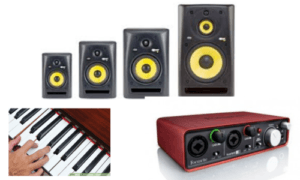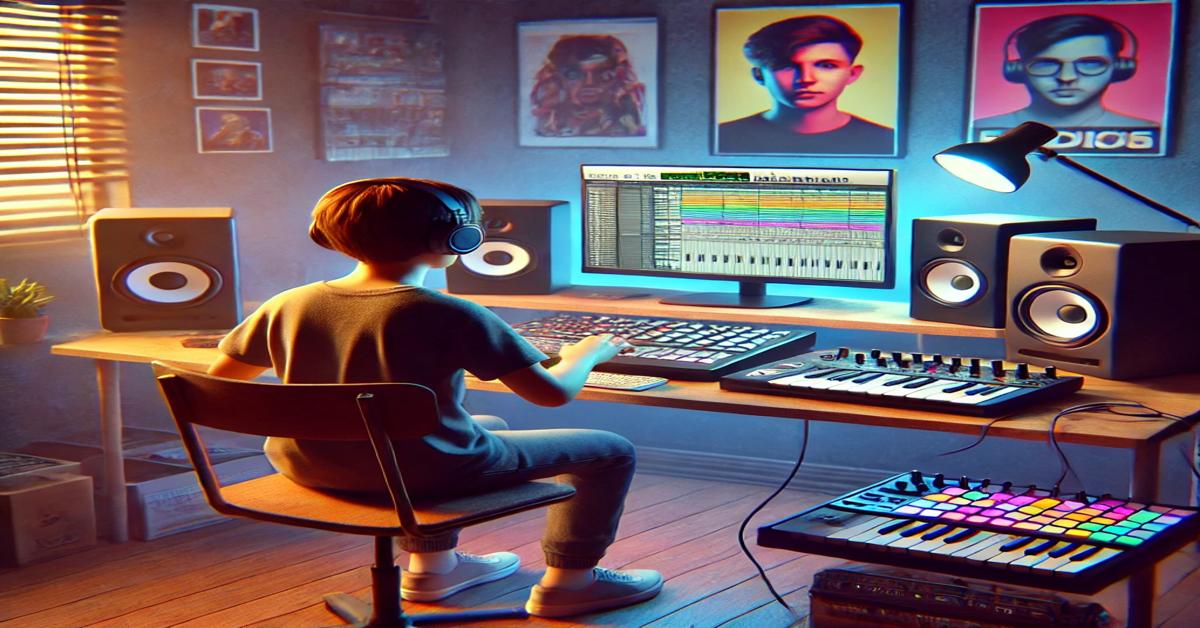EDM, short for Electronic Dance Music, isn’t just a genre—it’s a whole universe. EDM is like a vast galaxy bustling with different beats and vibes, from House and Techno to Dubstep and Trance . Exploring its sub-genres opens up a world of diverse sounds and styles, each with its flair. Knowing what sets these apart helps you find your own groove and build a unique sound.
The journey of EDM traces back to the disco era of the 70s and 80s. As the beats shifted, electronic music started to evolve, branching out into various transformative styles. From the underground clubs of Europe to the mainstream stages worldwide, the evolution of EDM reflects cultural and technological shifts. Inspired by pioneering artists like Kraftwerk and Daft Punk, EDM continued to break boundaries and innovate, reshaping how we perceive music.
Appreciating the influences and pioneers of EDM is like understanding the foundation of a skyscraper. Figures such as Avicii, Deadmau5, and Skrillex have played pivotal roles in shaping the modern EDM landscape. Familiarizing yourself with their work and contributions can provide much-needed inspiration and context for your creative process.
Grasping the basics of EDM production is crucial for any budding producer. It’s not just about making beats—it’s about crafting an experience, one that keeps the energy soaring and the dance floor packed. This foundational knowledge sets the stage for you to channel your creativity effectively, ensuring that your tracks not only sound good but also resonate deeply with listeners.
Essential Gear and Software for EDM Production
Starting out in EDM production, having the right gear and software is like your survival kit in a musical jungle. The centerpiece of your setup will be your Digital Audio Workstation. DAWs like Ableton Live, FL Studio, and Logic Pro X are popular among EDM producers for their versatility and user-friendly interfaces. Each DAW has its own flair, so exploring them will help you find one that matches your style and workflow.
A solid MIDI controller or keyboard can be your best mate in crafting melodies and triggering samples. They bring a hands-on feel to your digital production, letting you dive into the nitty-gritty of your sound. It doesn’t have to be fancy, just reliable and responsive, acting as a physical extension of your creative brain.
Being on a budget doesn’t mean skimping on crucial tools. There’s plenty of beginner-friendly hardware, like audio interfaces and monitors, that can fit within a tight budget while delivering quality that’s perfect for starting out. They ensure you hear every beat and bass drop with clarity, crucial for honing your skills.
Virtual instruments and plug-ins are the secret sauce of EDM production. They emulate sounds of real instruments and create effects, expanding your sonic palette without filling your room with gear. Beginner-friendly options often come bundled with DAWs, giving you a solid starting kit to experiment with a wide array of sounds.
Crafting a cost-effective production setup is all about smart choices. Prioritize what enhances your workflow and fuels creativity. Whether you’re in a bedroom studio or a shared space, these essentials are your toolkit for taking raw ideas and turning them into fully-fledged tracks that make people move.

Building the Backbone: Creating Beats and Rhythms
Creating your first beat sets the foundation for your EDM tracks. As daunting as it might seem, breaking it down step-by-step makes the process more manageable. Starting with a basic drum pattern can help you build your rhythm. From there, layering different elements gradually adds depth to your music.
Tempo, rhythm, and syncopation are the heartbeat of any EDM track. Understanding these elements is key to crafting music that moves people. Tempo dictates the speed and energy, while syncopation adds that unexpected twist to keep listeners on their toes. Mixing different rhythms creates a dynamic track that adds a personal touch to your sound.
Drums and percussion serve as the spine of EDM. They drive the energy and structure the track. Experimenting with various drum sounds and arrangements helps create a unique vibe. Whether it’s a heavy bass kick or crispy hi-hats, each element plays a role in shaping your signature sound.
Layering sounds is where the magic happens. Building complexity involves blending sounds, samples, and loops to create something fresh. Tools in your DAW can help isolate or combine frequencies, giving each layer its own space. This method is crucial in developing a rich, full-bodied track that captivates listeners.
Loop libraries and sample packs offer a treasure trove of ready-to-use sounds. These resources can inspire new ideas and streamline your creative process. Utilizing loops provides a great starting point, allowing you to tweak and tailor them until they fit seamlessly into your track.
Composing, Arranging, and Mixing Your Track
When crafting an EDM track, understanding basic music theory makes a world of difference. It helps in piecing together melodies and harmonies that are engaging and memorable. While not mandatory, a little knowledge about scales and chords can guide your creative instincts, ensuring your tracks resonate with listeners.
Arranging your track is all about setting a journey for your listeners. Whether you’re constructing a three-minute banger or an extended play, having a clear structure helps maintain energy and flow. Common structures include intros, builds, drops, and outros, each serving a unique purpose in keeping the audience hooked.
Sound design and synth programming are the playgrounds of EDM production. Crafting unique sounds using synths adds a personal touch to your music. Tools within your DAW allow for endless possibilities, letting you create anything from mellow pads to aggressive leads, shaping the emotional core of your track.
Mixing is where all your elements come together like pieces of a puzzle. Balancing levels, panning sounds, and applying effects like reverb and compression are key to making your track sound polished and professional. Mastering these techniques enhances clarity and ensures every part of your track shines.
Read more: Building Your First EDM Track: A Step-by-Step Guide
Mistakes are part of the learning curve. Overloading a track with effects or overcrowding it with sounds can muddle its impact. Staying open to feedback and continuously practicing refines your skills. Over time, drafting out new ideas and revisiting old ones sharpens your ability to produce standout tracks.


This article provides a comprehensive, beginner-friendly guide to EDM production. It highlights the diversity of EDM sub-genres, encouraging newcomers to explore and find their unique style by understanding foundational influences and iconic artists. Emphasizing the importance of essential tools like DAWs and MIDI controllers, it guides readers on assembling a cost-effective setup without compromising quality. The article also breaks down the technical aspects of creating beats, rhythms, and layering sounds, offering insight into crafting a track’s backbone.
Furthermore, it delves into essential production stages like composition, arrangement, sound design, and mixing. These steps are explained in a way that simplifies complex processes, making the journey from raw ideas to polished tracks accessible. The article reminds readers that mistakes are part of the learning curve and encourages experimentation, feedback, and continual refinement to develop a personal sound that resonates with listeners.
Thank you so much for your comment, Peter! I am glad you found the article comprehensive for anyone staring EDM Production